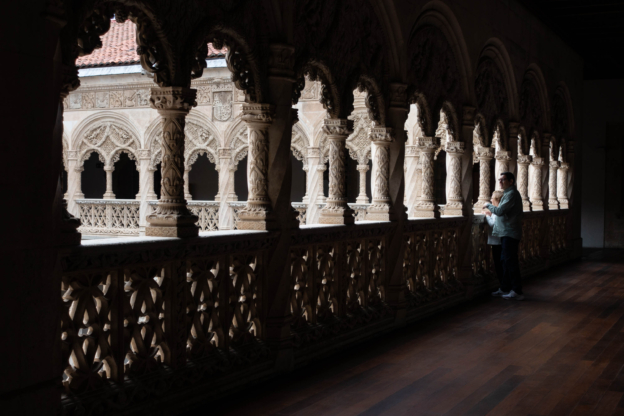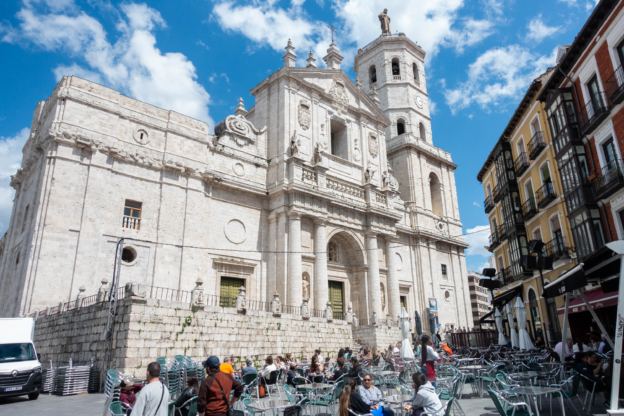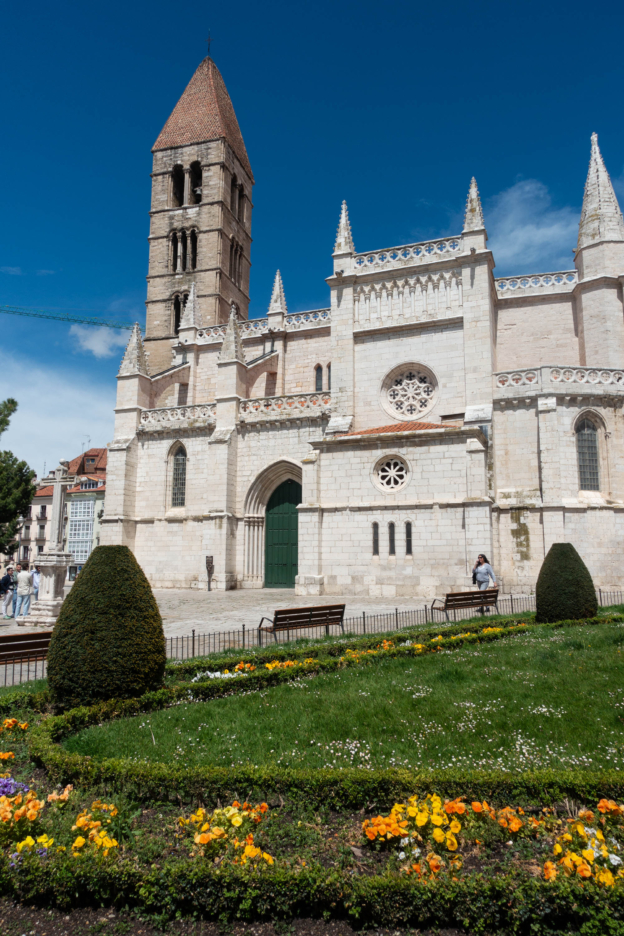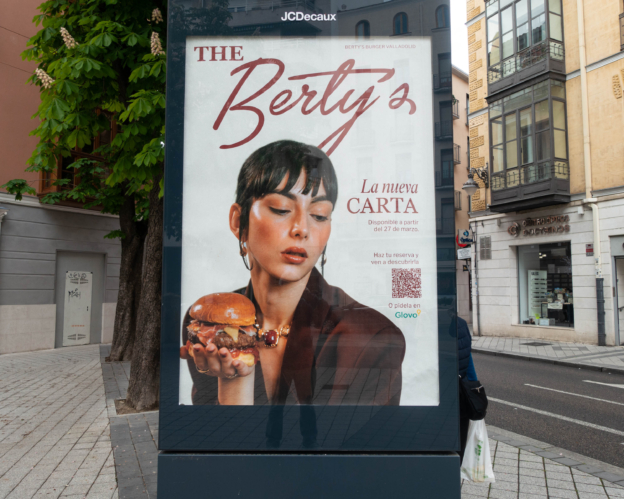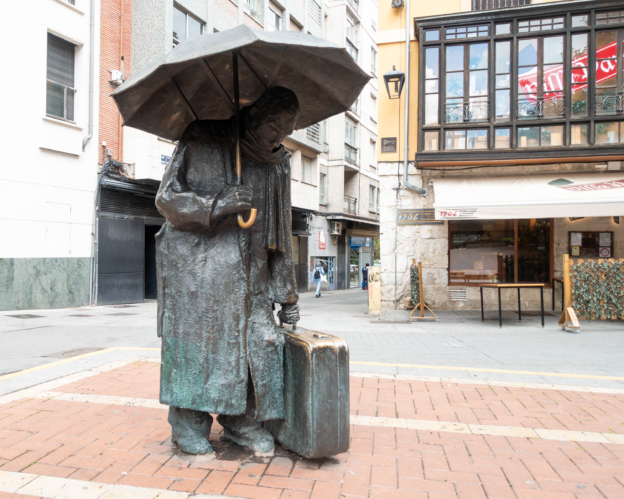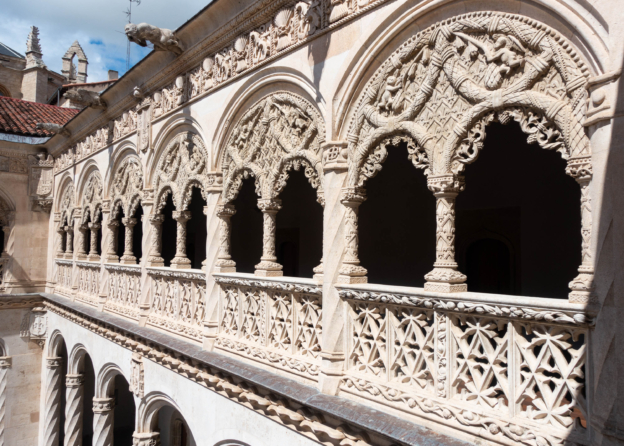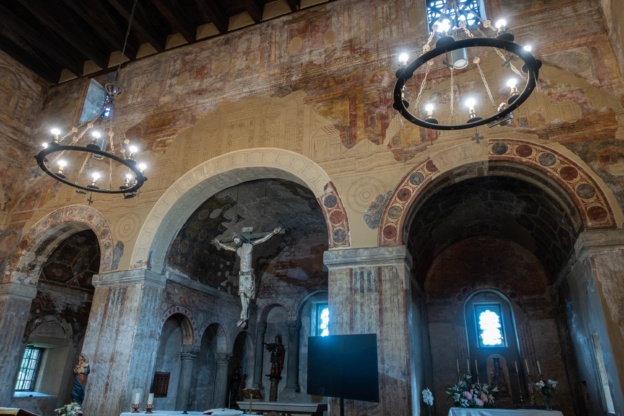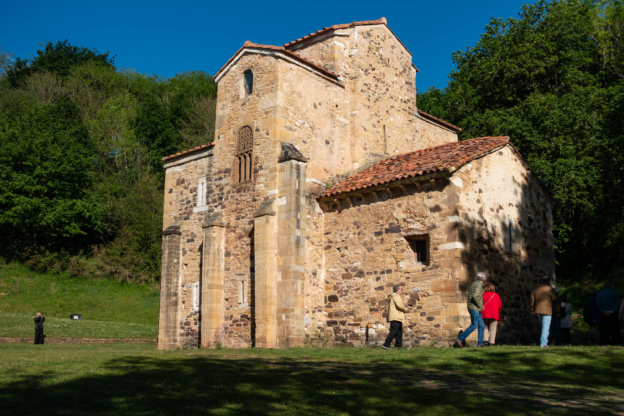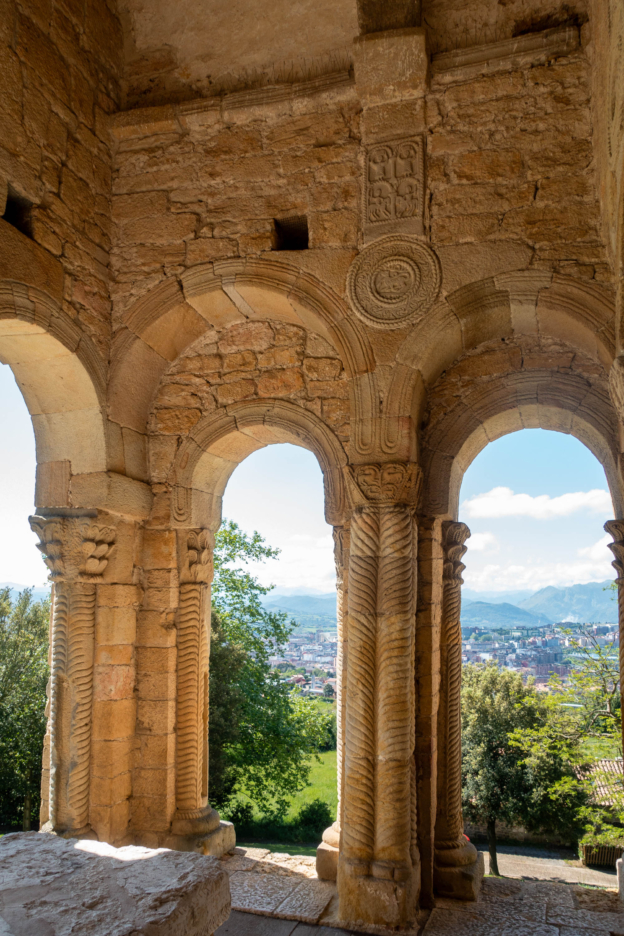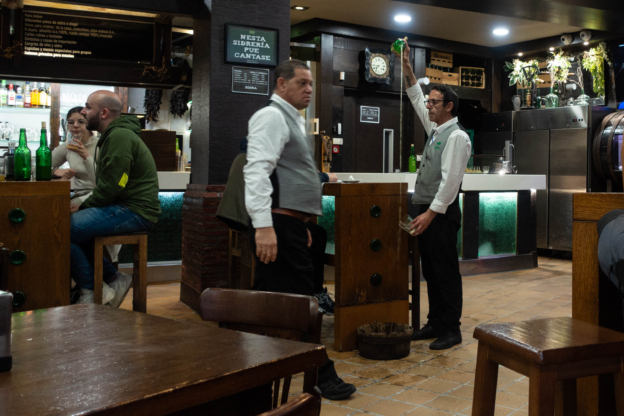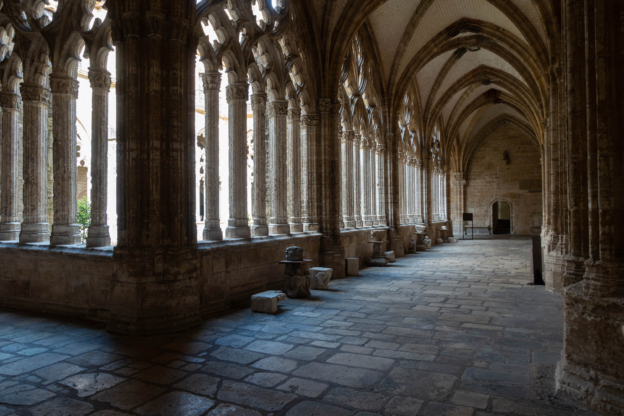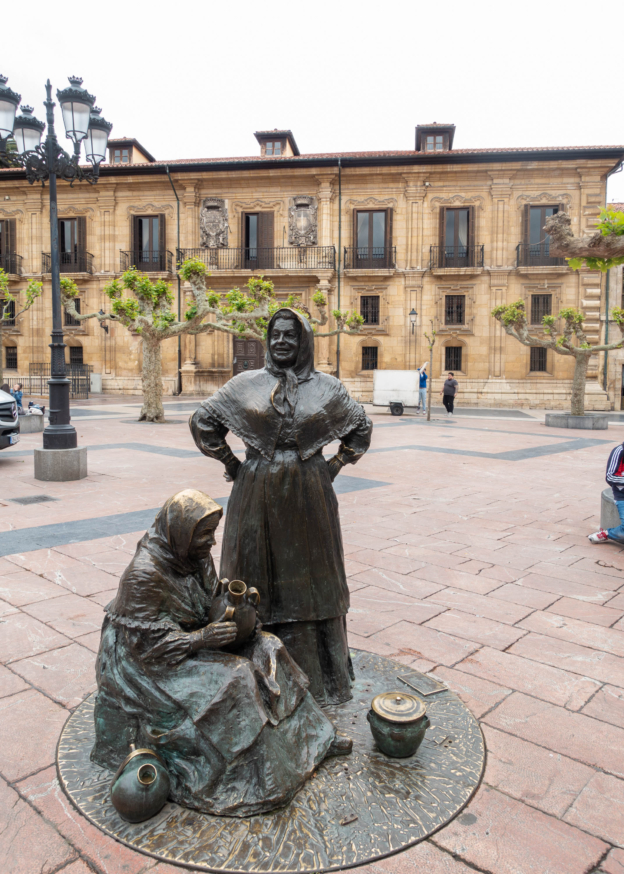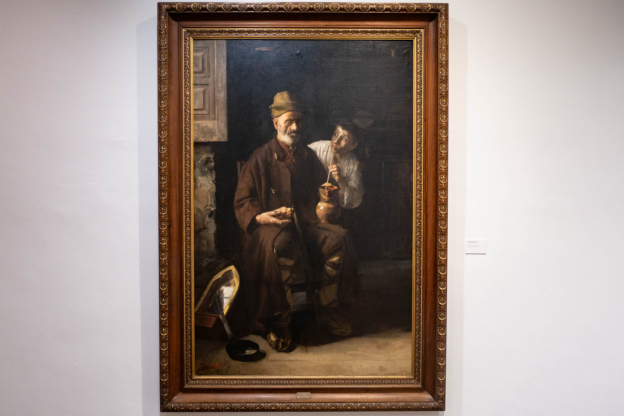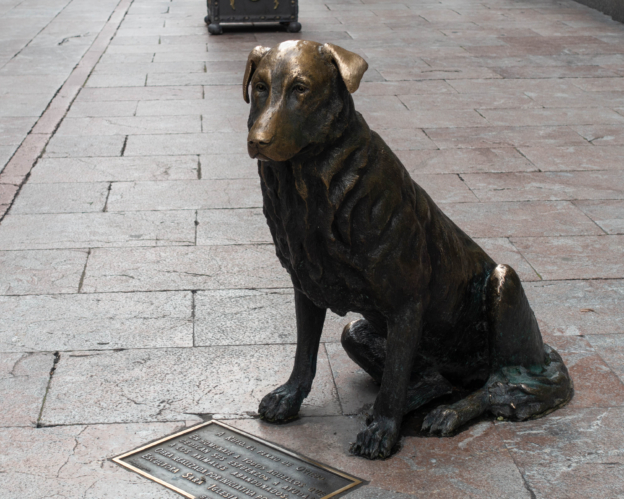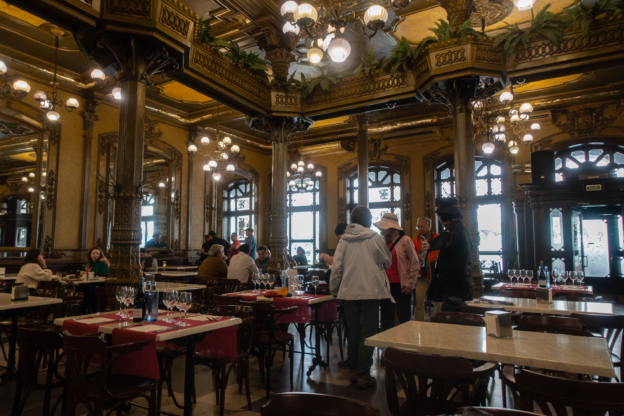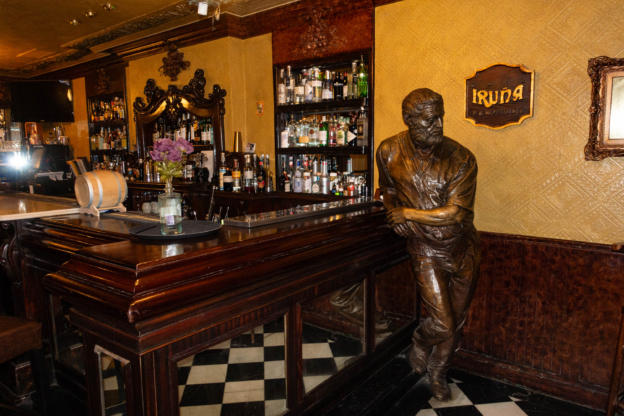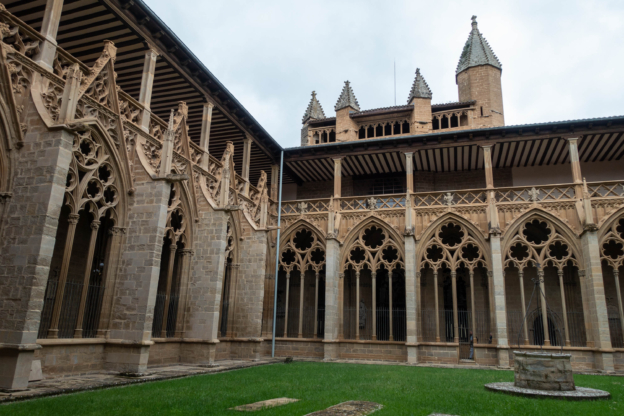All Photos Are Below the Travelogue Text
Click on Any Photo To Open Slide Show
To print the travelogue, right click anywhere on the page. Choose "Print" from your browser dialog box. You can choose Save to PDF in the browser print window.
Share your thoughts.
Email Dave - coxdavid55@hotmail.com
First, a general report on the weather. I expected some rain in March when I arrived, but by now I have experienced rain on a majority of days I have been in Spain, in all parts of the country and through mid-May. I checked AI and was told Spain is experiencing, in some cases, record rainfall this year. May normally is lovely Spring weather with wildflowers, but only occasional rain. This year it seems to have rained most days, with only an occasional couple of sunny days in a row. Sort of discouraging. Now in Burgos it finally is blue sky and warm.
I visited for the first time the Museo Nacional de las Esculturas, or Sculpture Museum, in Valladolid. What a marvel. The building was the Colegio de San Gregorio, a Renaissance masterpiece, particularly the entrance and the inner courtyard. The sculptures, which actually include early oil paintings on wood and Roman mosaics, cover times from Rome through the post-Renaissance. Huge rooms full of complete carved and painted altar pieces from a number of now crumbled monasteries and churches. I don’t know how I missed this must-see my last visit to Valladolid a year and half ago.
As I wrote extensively fairly recently on Valladolid, I will pass on repeating its cultural charms now.
I have been traveling in Spain for 22 years, and have enjoyed photographing and studying the architectural styles, particularly that of old churches, from Visigoth times through Baroque. I have noticed, though never really researching, the lack of churches between the Visigoth Kingdom ending in the early 8th Century and the Romanesque style commencing in the 10th Century. In Oviedo, capital of Asturias, I finally was made aware of why this gap period exists. The Moors defeated the Visigoth Kingdom in 712, so ending the Visigoth architecture period – the Moors conquered almost all of the Iberian Peninsula but failed, fully, to conquer the Kingdon of Asturias. It was from Asturias the Reconquest commenced, so in Oviedo there exist several palaces and churches architecturally labeled Pre-Romanesque (I think the label “post-Visigothic” would have been a more accurate label for the Spanish style). The major examples of pre-Romanesque were constructed early in the 9th Century by King Alfonso II, who defeated the Moors. I have photographed 4 major examples, pics included below, all commenced under the reign of Alfonso II in Asturias, which clearly show the continuation of the Visigoth style of columns and capitals, but also showing the general shape of the naves and columned windows presaging the Romanesque.
Oviedo is famous (I just found out) for its family-owned cider businesses, where they grow the apples, crush them and ferment the cider to about 6% alcohol and with natural carbonation. The cider then is bottled in 700ml bottles and corked and sent to the dozens of Cidrerias (cider bars) in Oviedo, most of which are along a single steep 2 block long street running uphill (unless you have started from the other end). The bottles cost about $5 and are uncorked and then poured only a swallow at a time. The waiters constantly come around to the table or bar to pour an inch into your glass – the pours are made holding the bottle as high as can be reached, with the glass held in the other hand as low as possible. The waiter never looks at the bottle or the glass, but stairs straight ahead to be able to see both the bottle and glass at the same time out of corners of the eyes (see pic). The cider hitting the glass foams greatly, and is to be downed immediately before the foam disappears, said foam to add to the the fragrance. All I know is the pours are not terribly accurate – the wet tiles and floor splashes witness the same. I found the cider to be rather sour, and so prefer red wines or beer.
Also, once again, as in so many Spanish towns, the squares and street corners just are popping with bronze statues, not on pedestals, but situated as if living people. I have included several of my favorite statues in the pics. My all-time favorite bronze has to be the one on a street corner in Oviedo, with a plaque dedicated to “Rufo”, the yellow lab – his head bright shiny from the petting of thousands of hands of those passing by (see pic below). From bronzes switch to street corner ads – in Spain some are pretty wild – check the photo below of the ad for a hamburger joint (I guess sexy can sell hamburgers too; years ago I published a photo of a Burger King Spanish billboard advertising an “extra-long” burger- 3 patties lined up on a hoagy bun, with the caption “Impresiona a las Chicas”).
The Museo Bellas Artes in Oviedo is nice, containing examples of paintings by Zurbaran, El Greco, Miranda and Goya as well as modern art by Picasso, Dali and Miro (works of the last of these may be well known, but never have impressed me). I was delighted to recognize the scene in a wonderful 19th century painting as being imagined from the 400-year-old book “Lazarillo de Tormes” (which I just read while in Salamanca), where Lazarillo sneaks wine from his abusive blind master through the use of a straw (pic below).
On Monday I took a train to Leon, and from there on to Pamplona – the scene of most of the action in Hemingway’s first and, some say, greatest novel, “The Sun Also Rises”. As I have been re-reading a number of classic novels related to the parts of Spain I am visiting, I have just finished Hemingway. I first read the book over 50 years ago. Although much of the storyline came back to me, I had forgotten how dark was much of the camaraderie of the 5 main characters and how damaged the psyches from involvement in WWI. The book, of course, put Pamplona on the map for the “running of the bulls” during the San Fermin Festival. I first wrote from Pamplona 19 years ago, and mistakenly said Hemmingway wrote most of the novel from the Iruna Café, where I have spent time. Actually, while in Pamplona he spent much of his time with his friends in the Iruna and then relied on those experiences as the characterizations and setting for his novel. Although the book’s forward says nothing therein is intended to represent real people, I understand Hemingway generally lost his friends after the book came out, as the book’s characterizations were less then flattering and too obviously based upon his real friends. He actually wrote much of the book while in nearby San Sebatian and in Madrid.
I have moved on to Burgos and, finally, Spring weather. Will report on that later. Dave
- Catedral, Valladolid, Spain
- Iglesia de Santa Maria La Antigua 12th C, Valladolid, Spain
- crazy hamburger ad by Berty’s Burger, Valladolid, Spain
- bronze old man with umbrella & suitcase in Plaza de Sirenas, Vallodolid, Spain
- Central Courtyard, Colegio de San Gregorio (built by Bishop Alonso de Burgos, Chancelor to the Catholic Monarch Isabella), 15th C Renaissance, now houses National Museum Sculpture, Valladolid, Spain
- Central Courtyard, Colegio de San Gregorio (built by Bishop Alonso de Burgos, Chancelor to the Catholic Monarch Isabella), 15th C Renaissance, now houses National Museum Sculpture, Valladolid, Spain
- San Julian de los Prados, 1st half 9th C by Alfonso II, pre Romanesque, World Heritage site, Oviedo, Spain
- San Julian de los Prados, 1st half 9th C by Alfonso II, pre Romanesque, World Heritage site, Oviedo, Spain
- San Miguel de Lillo, 9th C World Heritage Site, pre-Romanesque, Oviedo, Spain
- Iglesia Santa Maria del Naranco, 9th C World Heritage Site, pre-Romanesque, Oviedo, Spain
- Iglesia Santa Maria del Naranco, 9th C World Heritage Site, pre-Romanesque, Oviedo, Spain
- pouring Sidra, La Pumarada Sidrera, Olviedo, Spain
- Claustro, Catedral de San Salvador, Oviedo, Spain
- La Regenta, bronze statue by Fernandez, Oviedo, Spain
- bronze of 2 women with pots, near Plaza Fontan, Oviedo, Spain
- Luis Pidal, Lazarillo de Tormes wine from straw, 1900, Museo Bellas Artes Asturias, Oviedo, Spain
- Rufo the bronze dog sculpture, Oviedo, Spain
- Cafe Iruna, Pamplona, Spain
- Hemingway bronze at bar in Cafe Iruna, Pamplona, Spain
- Catedral, Pamplona, Spain
To print the travelogue, right click anywhere on the page. Choose "Print" from your browser dialog box. You can choose Save to PDF in the browser print window.
Share your thoughts.
Email Dave - coxdavid55@hotmail.com
